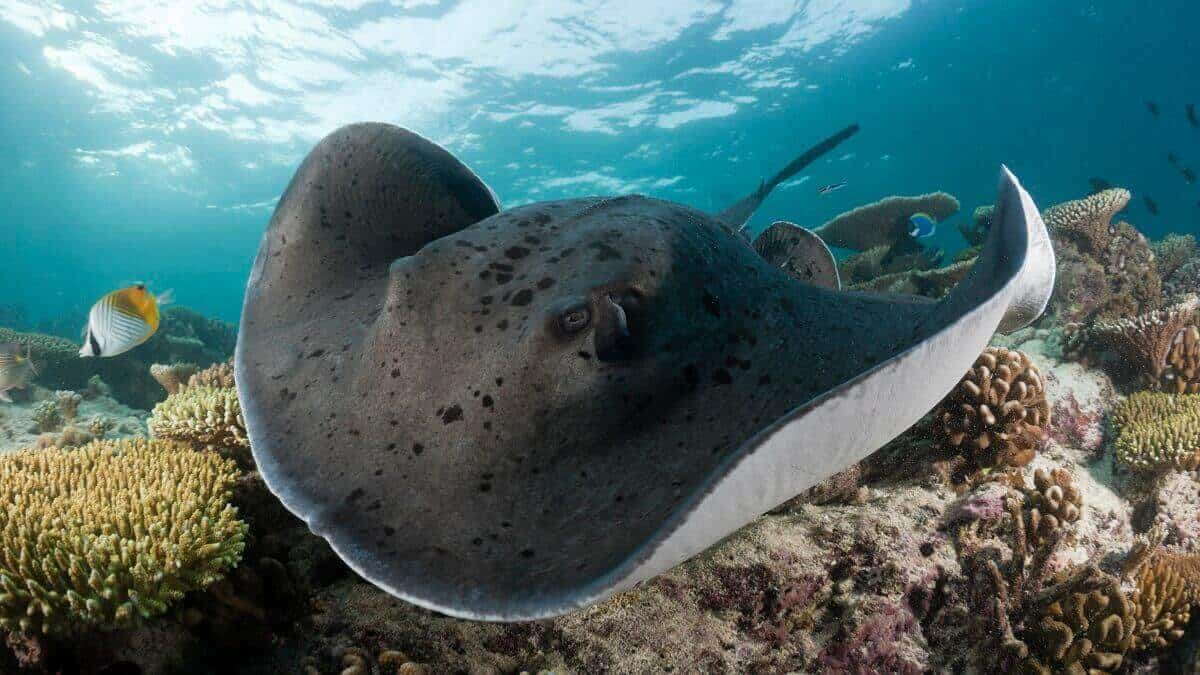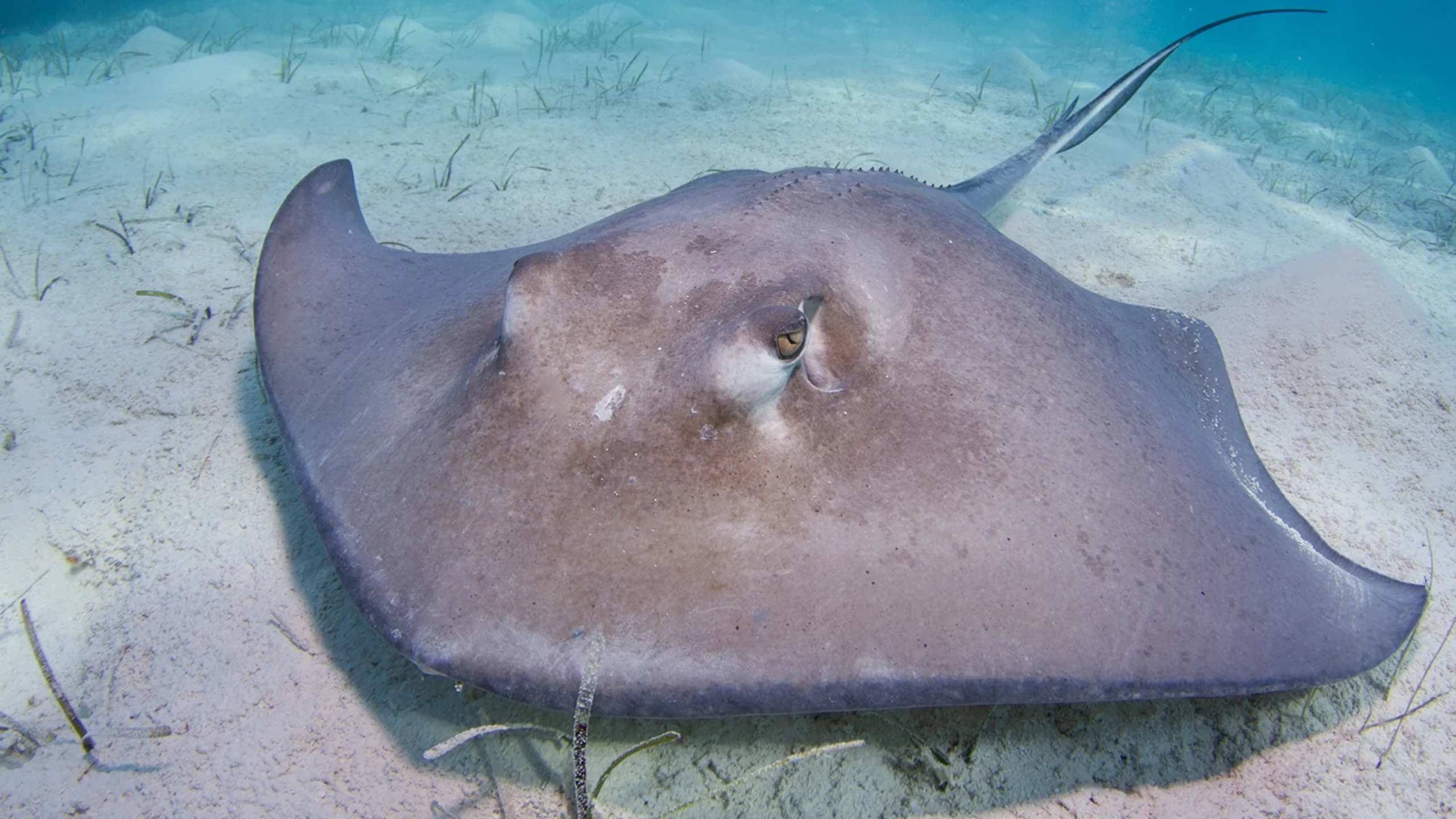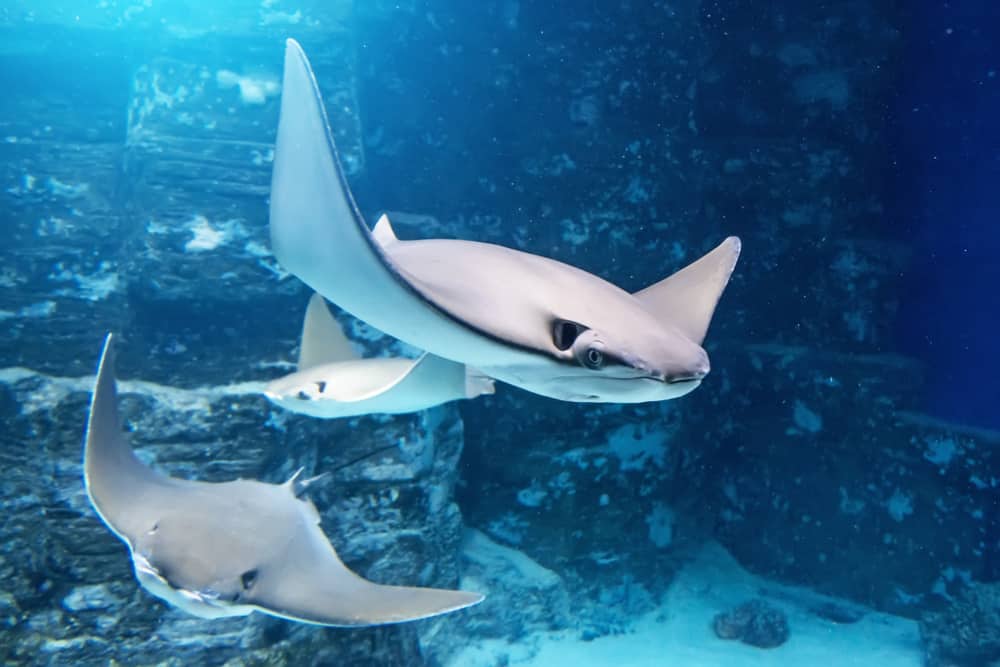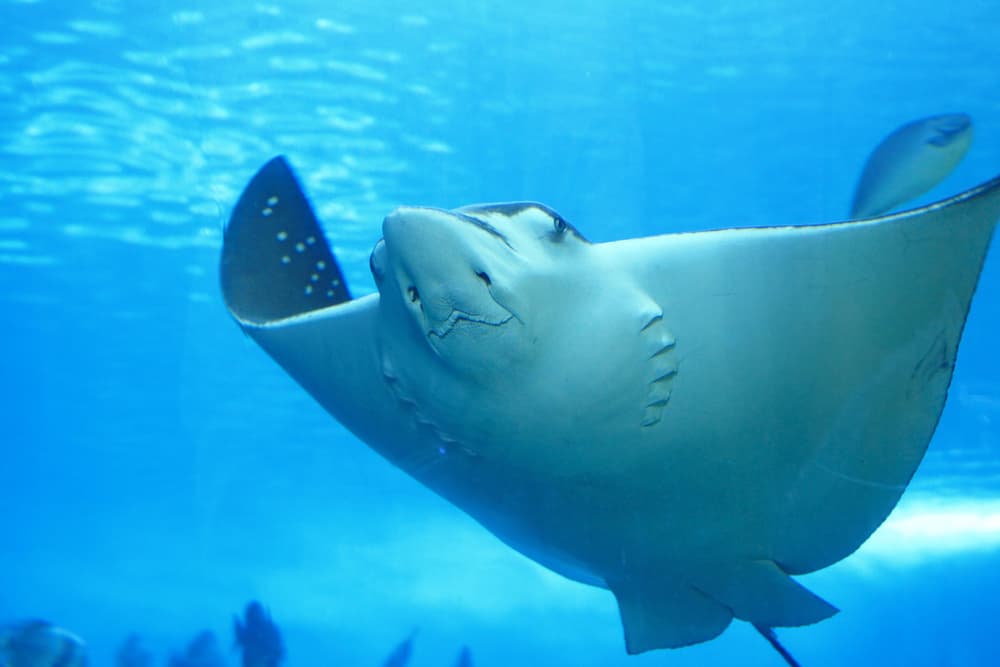Examining marine life reveals that the oceans, seas, and rivers possess a complex and splendorous marine fauna. In this sense, the stingray is one of the most majestic and impressive marine animals. Have you been able to appreciate one of them? If you are also interested in rays, I invite you to keep reading about this animal.
The Physical Characteristics of Stingrays
Stingrays are considered flat marine fish, and this is due to the barbed spines and stingers found on their long tails. They can reach up to 6.5 feet in size and weigh up to 790 pounds.
They are related to sharks (both fish), and their skeleton is cartilaginous; that is, they do not have bones. In addition, the position of its mouth is unique; it is located under its body and is what allows it to swallow worms, shrimps, and clams, as well as to aspirate any dead matter found.
But this is not the most important thing. Its jaw possesses several thick layers with hollow struts, which in turn support the softer cartilage cores. This mechanism makes the stingray jaw a perfect combination of strength and lightweight maneuverability.
As for their eyes, we could say that is the weak spot of the rays due to the fact that they are located in the upper part of their body, so they are vulnerable to everything underneath them (this may be due to the fact that they spend so much time in the bottom of the ocean).
The Nature of Stingrays
Stingrays are carnivorous animals that hunt other predators. They spend most of their time inactive at the bottom of the ocean, where they partially bury themselves.
Due to their flat body, it is easy for them to nest at the bottom of the ocean, as they throw dirt on top that allows them to camouflage themselves and avoid predators. Its coloration generally reflects the shading of the seabed.
Their swimming is majestic, they do it when they want to move, and their movements are similar to those of waves, although some flap their sides like wings. Its tail has the primary function of protecting them, but sometimes they use it for maneuvering. Unfortunately, the sharp end of its tail can produce a poison that can be fatal for human beings; but luckily, Stingrays rarely attack humans, unless they feel threatened.
The Distribution Area, habitat, And Life Span of Stingrays
The Stingray descends from the large superorder of Batoidea, from which hundreds of species of rays, including the Stingray. However, much like their other family members, Stingrays are generally found in shallow coastal waters of temperate seas; they are considered “habitat engineers,” especially large rays because their way of eating helps build microhabitats for tinier creatures like many invertebrate fishes.
It is estimated that there are about 540 ray species in reefs, the open sea, and freshwater. Some of these known species are the black-spotted fantail ray (Taeniura meyeni), shark ray (Rhina ancylostoma), and the giant stingray (Mobula birostris). You may be surprised to learn that rays also produce oxygen.
The Stingray’s lifespan depends a lot on the species. Respected biologists have found that some species can live for approximately 7-8 years, but larger species of Stingrays can live up to 25 years. However, the conversation of how long this cartilaginous fish lives is still under discussion.
What Do Stingrays Eat?

While being pure carnivores, stingrays feed from a variety of animals found under the sea: fish, mollusks, invertebrates, and crustaceans are some of their most common foods. But the diet of the stingrays depends on the following.
Stingrays in captivity
Stingrays are a popular attraction in aquariums around the world, so there are many species in captivity. However, the carers cannot maintain a stingray’s diet as it would be in the wild, which is why it can vary so much.
Some of the most common foods for captive Stingrays are live shrimp, earthworms, nutritional gels, frozen mysis shrimp, frozen black worms, and frozen blood worms. The gels tend to be used in order to compensate for some nutrients that could not be ingested.
Wild Stingrays
Their primary diet is crustaceans, whether crabs, krill, lobsters, or barnacles. But they also consume mollusks like snails, mussels, squid, and oysters. In addition, some pelagic rays that hunt in the upper waters of the oceans tend to eat fish such as sardines, salmon, puter fish, mackerel, and anchovies.
When it comes to freshwater Stingrays, these tend to consume insects like mosquitos and larvae, in addition to annelid worms and jellyfish; there are even Stingrays that have adapted in order to survive with only insects.
Baby Stingrays
Baby Stingrays are born at the bottom of saltwater estuaries. In that place, they eat larvae, little shrimps and fishes, plankton, crustaceans, and plants; Those baby stingrays born in mangrove forests can eat a mix of zooplankton and small crustaceans that reproduce in the tropics.
Special Eating Behaviors

Some special eating behaviors of the stingrays are:
- They feed almost exclusively on prey that is alive, like fishes and crustaceans.
- They stun their prey, hitting them with the tail before swallowing them whole.
- They eat smaller rays if they have the chance.
- They can even eat small sharks.
- They suck in their prey and crush them with their jaws.
- When hunting at the surface, stingrays have been seen grabbing fish with their pectoral fins to eat them later.
How Do Stingrays Hunt Their Prey?

Due to the position of their eyes, stingrays do not use them for most of their hunts, unlike many deep-sea marine hunters. Nevertheless, stingrays are agile ambush hunters.
Their modus operandi when it comes to hunting is not simply harpooning fish and consuming them; instead, they prepare an ambush with a little twist, which tactic is backed up by their complex sensory system. Their sensory system is similar to the ones of the sharks, as they can feel the change in electric fields that creatures that live in the water generate.
How does it work? The sensory organs known as Lorenzini ampullae are found around the mouth of the Stingray, which allows it to detect whenever prey is nearby.
Stingrays, while being at the bottom of the sea, scan it, and when they localize a proper meal, they eat it directly or use a tactic called “tenting.”
The latter mentioned consists of pressing their pectoral fins against the bottom of the sea surface and trapping their prey by raising its head and generating a suction that attracts prey to its mouth, where it chews and crushes them (it swallows the soft meat and regurgitates the hard parts).
In Conclusion
Stingrays are marine animals that are pretty valuable to the ecosystem, which is why we have to take care of them and preserve them. Sadly, several of its species are in danger of extinction. As we have analyzed so far, their main diet is invertebrates living at the ocean’s bottom.
And these are hunted by an efficient and agile hunter, who uses their powerful jaw, swimming expertise, and electric sensors that allows them to detect their prey.
F.A.Q
Do Stingrays Eat Humans?
No, stingrays do not represent a natural danger for human beings, for they are actually scared of you; you generate as much fear in them as you possibly may have. But you have to be careful with these, due to their poisonous and sharp tail.
Besides, when feeling in an imminent state of danger, the stingrays can instinctively attack human beings, So you have to be especially careful not to step on them or scare them.
Do Stingrays Sting Their Prey?
Yes, with their pointed tails, they seek to stun their prey. Although this is not their primary hunting style, the Stingray’s sting can be deadly depending on where its small stinger, which is located on the underside of its tail, is inserted.
Do Stingrays Have Teeth?
Yes, stingrays have teeth, some mistakenly call them spikes, but they are teeth. Stingray’s teeth are flattened in the inner part of its mouth. Like shark teeth, rays teeth are made out of modified placoid scales (the same ones covering its body).
These teeth are known as skin teeth, and these scales have a central cavity surrounded by a layer of dentin that is covered with a substance similar to enamel. These teeth also molt and are replaced regularly.
The new teeth of the ray can grow underneath their existing teeth, which makes it difficult to determine how many teeth they actually have because this can constantly change. While it is true that they cannot be seen from the outside, they rest flat on the floor of the mouth and emerge when the prey has been captured.
